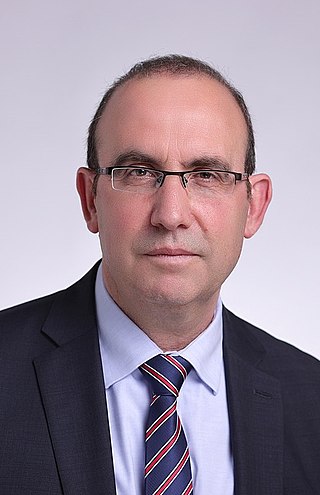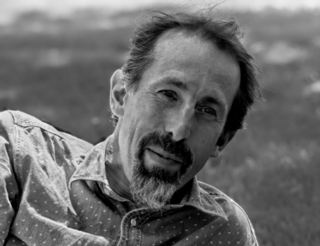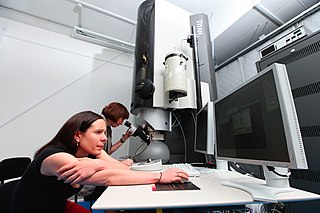
Nanotechnology, often shortened to nanotech, is the use of matter on atomic, molecular, and supramolecular scales for industrial purposes. The earliest, widespread description of nanotechnology referred to the particular technological goal of precisely manipulating atoms and molecules for fabrication of macroscale products, also now referred to as molecular nanotechnology. A more generalized description of nanotechnology was subsequently established by the National Nanotechnology Initiative, which defined nanotechnology as the manipulation of matter with at least one dimension sized from 1 to 100 nanometers (nm). This definition reflects the fact that quantum mechanical effects are important at this quantum-realm scale, and so the definition shifted from a particular technological goal to a research category inclusive of all types of research and technologies that deal with the special properties of matter which occur below the given size threshold. It is therefore common to see the plural form "nanotechnologies" as well as "nanoscale technologies" to refer to the broad range of research and applications whose common trait is size.
The Science and Engineering Research Council (SERC) and its predecessor the Science Research Council (SRC) were the UK agencies in charge of publicly funded scientific and engineering research activities, including astronomy, biotechnology and biological sciences, space research and particle physics, between 1965 and 1994.
Sir Mark Edward Welland, is a British physicist who is a professor of nanotechnology at the University of Cambridge and head of the Nanoscience Centre. He has been a fellow of St John's College, Cambridge, since 1986 and started his career in nanotechnology at IBM Research, where he was part of the team that developed one of the first scanning tunnelling microscopes. He was elected as the master of St Catharine's College, Cambridge and took up office on 1 October 2016.

Ehud Gazit is an Israeli biochemist, biophysicist and nanotechnologist. He is Professor and Endowed Chair at Tel Aviv University and a member of the executive board of the university. In 2015, he was knighted by the Italian Republic for services to science and society. He was recently elected as the 2023 International Solvey Chair in Chemistry, a position that was previously held by 15 of the top world scientists including three Nobel laureates.

ACS Nano is a monthly, peer-reviewed, scientific journal, first published in August 2007 by the American Chemical Society. The current editor in chief is Xiaodong Chen. The journal publishes original research articles, reviews, perspectives, interviews with distinguished researchers, and views on the future of nanoscience and nanotechnology.

Sharon C. Glotzer is an American scientist and "digital alchemist", the Anthony C. Lembke Department Chair of Chemical Engineering, the John Werner Cahn Distinguished University Professor of Engineering and the Stuart W. Churchill Collegiate Professor of Chemical Engineering at the University of Michigan, where she is also professor of materials science and engineering, professor of physics, professor of macromolecular science and engineering, and professor of applied physics. She is recognized for her contributions to the fields of soft matter and computational science, most notably on problems in assembly science and engineering, nanoscience, and the glass transition, for which the elucidation of the nature of dynamical heterogeneity in glassy liquids is of particular significance. She is a member of the National Academy of Sciences, the National Academy of Engineering, and the American Academy of Arts and Sciences.

Nikolay Zheludev is a British scientist specializing in nanophotonics, metamaterials, nanotechnology, electrodynamics, and nonlinear optics. Nikolay Zheludev is one of the founding members of the closely interlinked fields of metamaterials and nanophotonics that emerged at the dawn of the 21st century on the crossroads of optics and nanotechnology. Nikolay’s work focus on developing new concepts in which nanoscale structuring of matter enhance and radically change its optical properties.

Alexandra Olaya-Castro is a Colombian-born theoretical physicist, currently a Professor in the Department of Physics and Astronomy at University College London. She is also the Vice-Dean for the Mathematical and Physical science Faculty.

Jeremy John Baumberg, is a British physicist who is Professor of Nanoscience in the Cavendish Laboratory at the University of Cambridge, a Fellow of Jesus College, Cambridge and Director of the NanoPhotonics Centre.

Nicole Grobert FRSC FYAE is a German-British materials chemist. She is a professor of nanomaterials at the Department of Materials at the University of Oxford, fellow of Corpus Christi College, Oxford, and a Royal Society industry fellow at Williams Advanced Engineering. Grobert is the chair of the European Commission's Group of Chief Scientific Advisors.

Mary Patricia Ryan is a Professor of Materials Science at Imperial College London and a Fellow of the Royal Academy of Engineering.

Sarah Jane Haigh is a Professor in the School of Materials at the University of Manchester. She investigates nanomaterials using transmission electron microscopy, including two-dimensional materials such as graphene.
Gustavo A. Stolovitzky is an Argentine-American computational systems biologist. He is an IBM Fellow and the Director of the Translational Systems Biology and Nano-Biotechnology Program at IBM Research. He serves as the program director of the Thomas J. Watson Research Center's Translational Systems Biology and Nanobiotechnology Program, as well as an Adjunct professor of Genetics and Genomic Sciences at the Icahn School of Medicine at Mount Sinai and an Adjunct Associate Professor of Biomedical Informatics at Columbia University. His research has been cited more than 20,000 times
Elisa Riedo is a physicist and researcher known for her contributions in condensed matter physics, nanotechnology and engineering. She is a professor at the New York University Tandon School of Engineering and the director of the picoForce Lab.
Montserrat Calleja Gómez is a Spanish physicist who specializes in Bionanomechanics. She is currently a research professor at the Institute of Micro and Nanotechnology in Madrid, Spain.

Aleksandra Radenovic is a Swiss and Croatian biophysicist. Her research focuses on the development of experimental tools to study single-molecule biophysics. She is a professor of biological engineering at the École Polytechnique Fédérale de Lausanne (EPFL) and head of the Laboratory of Nanoscale Biology.

Anna Fontcuberta i Morral is Spanish physicist and materials scientist. Her research focuses on nanotechnology applied in the production of solar cells. She is a full professor at École Polytechnique Fédérale de Lausanne (EPFL) and the head of the Laboratory of Semiconductor Materials.
Laura Justine Garwin is an American trumpeter and former science journalist. One of the first women to become a Rhodes Scholar, she is the former physical sciences editor of Nature, co-editor of the book A Century of Nature, and a Fellow of the American Physical Society. After leaving her career in science to become a professional musician in London, she played with the BBC Symphony Orchestra and became principal trumpet of the Covent Garden Sinfonia and the St Paul's Sinfonia.
The Nature Index is a database that tracks institutions and countries and their scientific output since its introduction in November, 2014. Each year, Nature Index ranks the leading institutions and countries by the number of scientific articles and papers published in leading journals. This ranking can also be categorized by individual fields of research such as life sciences, chemistry, physics, or earth sciences, with different institutions leading in each. The Nature Index was conceived by Nature Research. In total, more than 10,000 institutions are listed in the Nature Index.
Boris Nikolaevich Chichkov, born 1955 in Novokuznetsk is a German-Russian Physicist whose research focus is on the development of novel laser technologies and their applications in material processing, photonics, and biomedicine.












